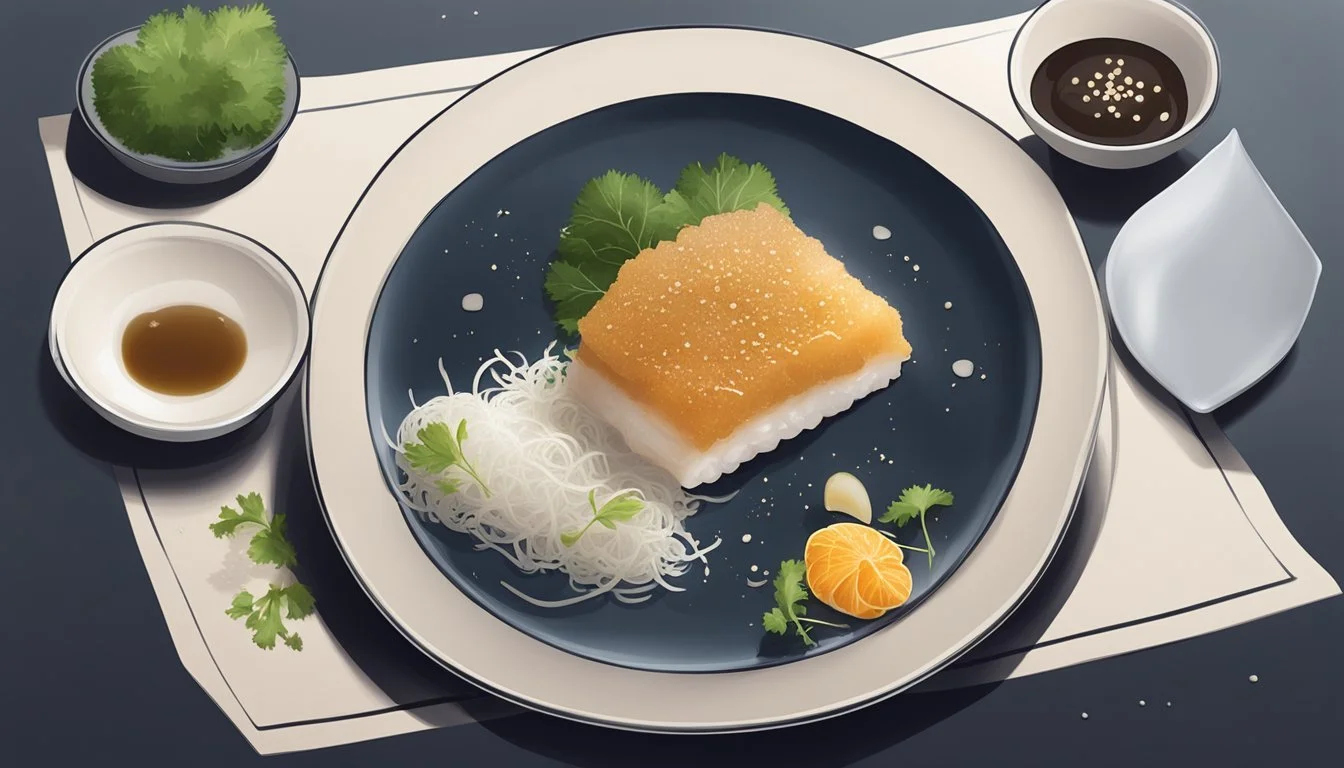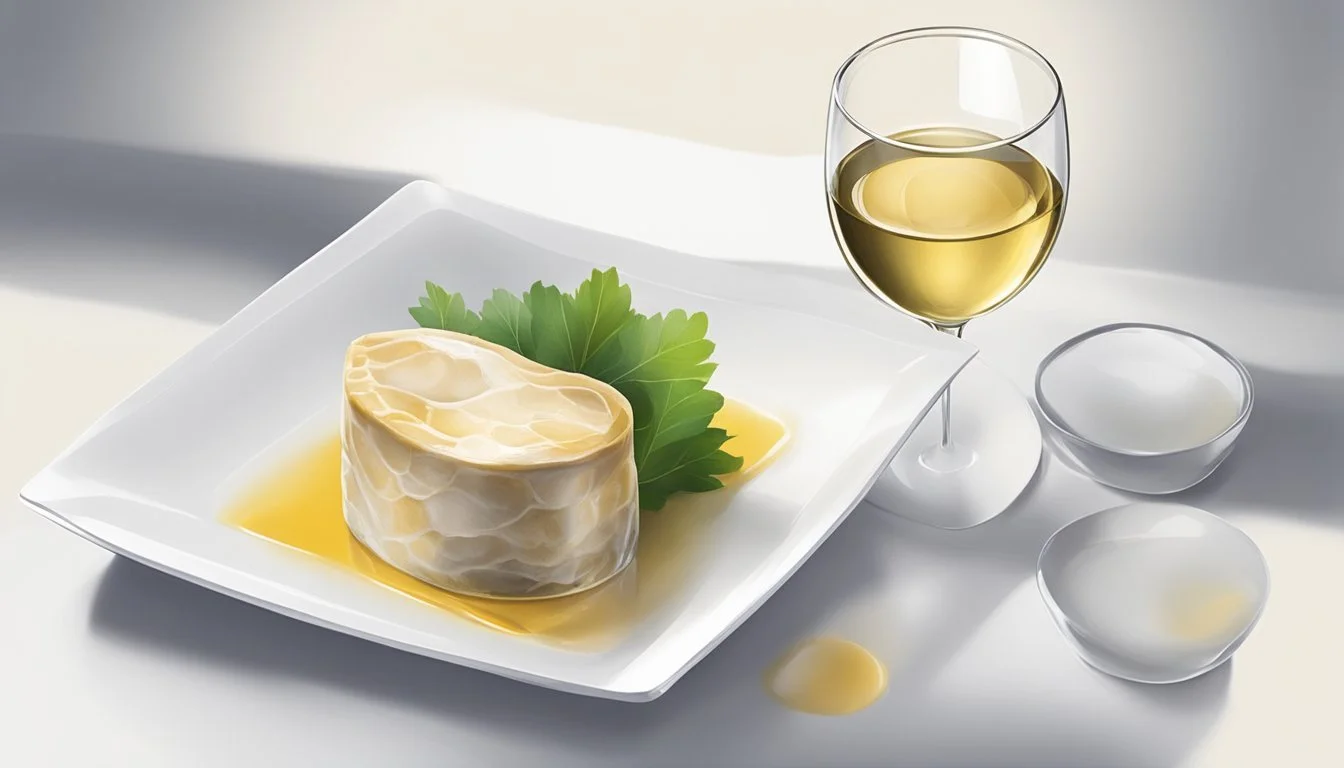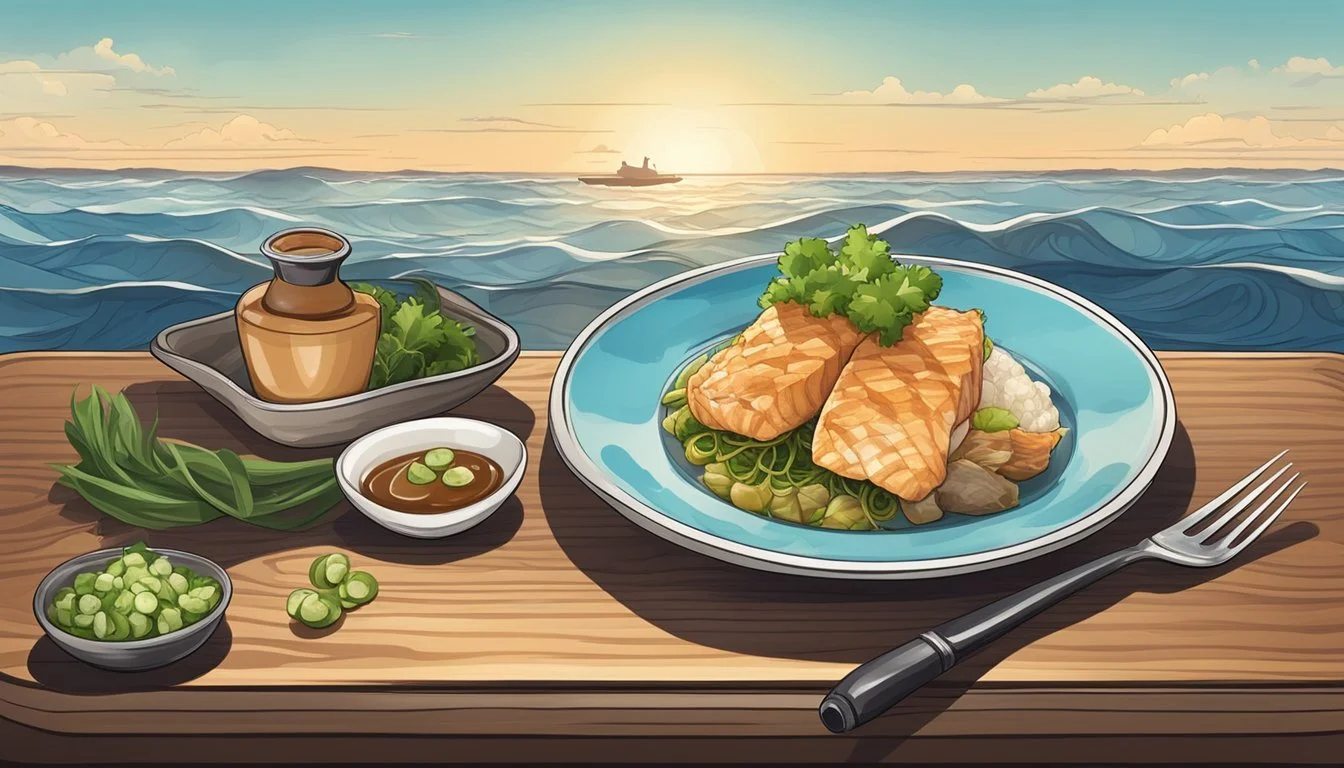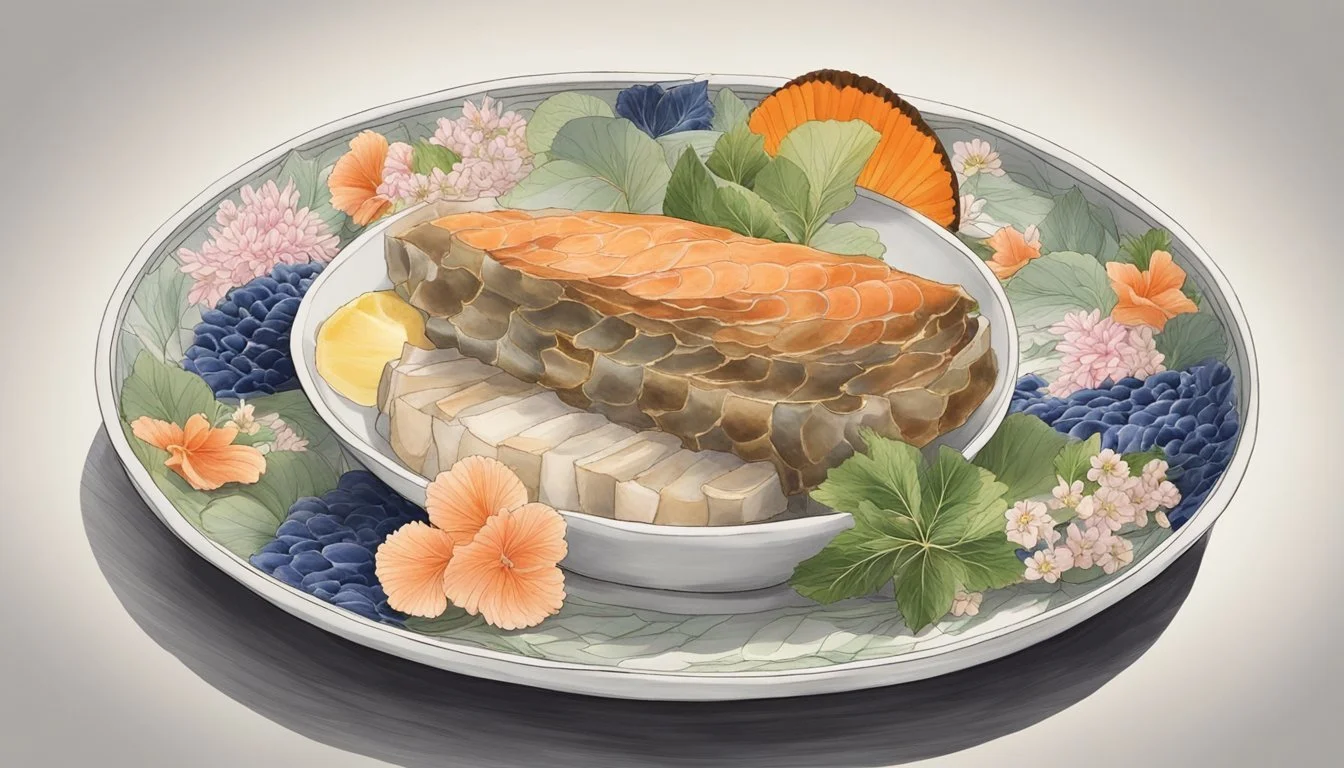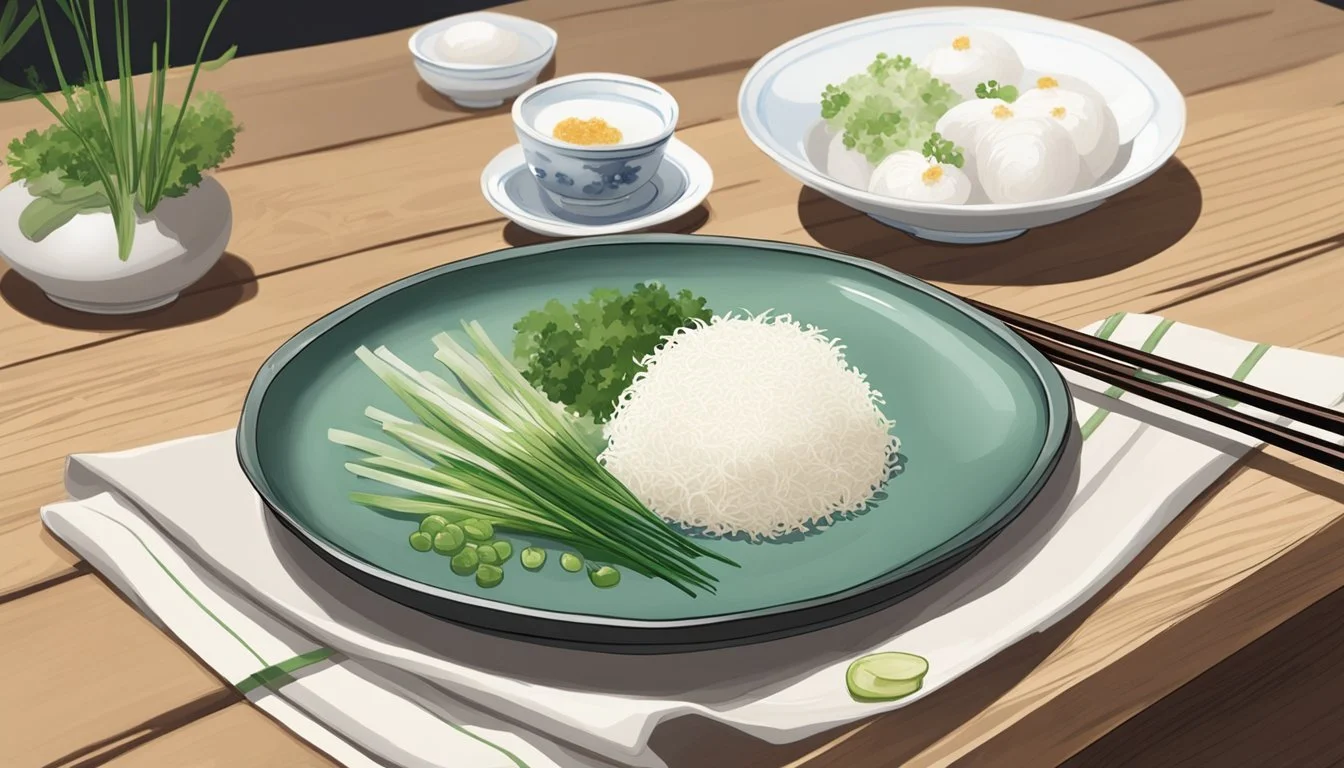Monkfish Liver Delicacies
Exploring Ankimo, Seafood's Luxurious Treat
Monkfish liver, also known as ankimo, is a culinary treasure in Japanese cuisine, revered for its rich, creamy texture and sophisticated depth of flavor. Touted as the 'foie gras of the sea,' this delicacy bears certain texture similarities to duck or goose liver pâté but stands on its own with a distinct, delicate taste that's less fatty and subtly oceanic. Traditionally served in kaiseki ryori and at sushi (What wine goes well with sushi?) restaurants as a prized appetizer, ankimo offers a unique gastronomic experience that highlights the versatility and refinement of seafood-based fine dining.
The preparation of monkfish liver involves a meticulous process to ensure its characteristic smoothness and to enhance its naturally umami-rich profile. Freshness is key, and the process typically includes soaking the liver in sake, removing any veins, and then steaming it to perfection. As the popularity of this delicacy grows, it finds its way into the menus of high-end restaurants worldwide, presenting diners with a dish that's at once traditional and exotic.
In exploring monkfish liver, diners not only indulge in a sumptuous savory treat but also partake in a centuries-old tradition that showcases the ingenuity of Japanese culinary arts. Ankimo's mild but distinct flavor eloquently tells a story of the sea, inviting gourmands and curious eaters alike to discover one of the many reasons Japanese cuisine is celebrated for its unique contributions to the world’s gastronomy.
Origin and Cultural Significance
Monkfish liver, or 'ankimo,' is not just a culinary delight, but a component deeply rooted in Japanese culture and seasonal traditions.
Monkfish Liver in Japanese Cuisine
In Japanese cuisine, the monkfish's liver, ankimo, is held in high esteem. Recognized for its rich, creamy texture, ankimo has earned the moniker "foie gras of the sea." It traditionally makes its appearance as a refined dish within kaiseki cuisine, an elaborate multi-course dining experience that emphasizes seasonality and artful presentation. The liver is often steamed and can be served as an appetizer, where its distinct umami flavor is celebrated.
Preparation: Monkfish liver is meticulously cleaned, soaked, and steamed to perfection.
Serving: Typically presented as an appetizer or part of a multi-course meal.
Ankimo's Place in Seasonal Feasting
Within the context of Japanese culinary culture, ankimo finds its peak season during the winter months. This seasonality underlines the liver's role in seasonal feasting, highlighting a time when it is at its best in both flavor and texture. The practice of enjoying ankimo correlates with Japan's cold season, showcasing the nation's deep connection to savoring seasonal foods. It's during this time that the liver is believed to be fattier and richer, offering an indulgent experience for those gathered around the table.
Seasonality: Ankimo is most commonly enjoyed during the winter.
Cultural Significance: Represents the Japanese appreciation for seasonal foods at their peak.
The Delicacy and Its Comparison to Foie Gras
Within the culinary world, monkfish liver, or ankimo, is often compared to foie gras, the rich liver of a duck or goose, for its luxurious taste and texture. These two delicacies share similarities that position ankimo as a seafood (What wine goes well with seafood?) alternative to the traditional foie gras, yet they diverge in terms of ethical considerations and harvesting methods.
Comparative Aspects of Monkfish and Duck Liver
Monkfish liver has gained the moniker "foie gras of the sea" for its comparable rich and creamy texture. Both ankimo and foie gras are characterized by their smooth, buttery consistency, which melts tantalizingly on the palate. They are high in fat content, providing a similar mouthfeel and a complex flavor profile relished in fine dining.
Texture: Both exhibit a creamy and smooth consistency.
Flavor: Ankimo offers a subtler, oceanic umami depth, while foie gras provides a richer, slightly gamier savor.
Foie gras typically comes from duck or goose liver, with the duck variant being slightly leaner and less expensive. The classic preparation of foie gras involves a technique known as gavage, a process of force-feeding the birds to enlarge their livers. In contrast, monkfish liver is harvested without such intensive practices, making it a less contentious choice for those concerned with ethical sourcing.
Ethical Distinctions of Ankimo Harvesting
The ethical dimensions of ankimo production contrast sharply with those associated with foie gras. Foie gras production, notably its force-feeding practice, has faced widespread criticism. This has even led to bans in several countries and states due to animal welfare concerns.
Foie Gras:
Gavage: A process considered inhumane by many, leading to legal and ethical backlash.
Bans: The ethical concerns have led to foie gras bans in various jurisdictions.
On the other hand, monkfish liver harvesting does not involve force-feeding, presenting it as an ethically more acceptable option for many diners. The ethical debate over ankimo revolves more around sustainable fishing practices rather than the treatment of the fish prior to harvesting their liver.
While ankimo does not face the same level of ethical scrutiny as foie gras, responsible culinary enthusiasts remain vigilant about the source of their monkfish liver to ensure sustainable and humane practices are followed. The absence of force-feeding in the harvesting of monkfish liver places ankimo in a different light compared to the traditional foie gras, possibly influencing consumer preferences.
Culinary Preparation and Techniques
The culinary art of preparing ankimo revolves around meticulous techniques to enhance its luxurious texture and rich taste. This section delves into the traditional recipe, contemporary twists, and presentation as an appetizer.
Traditional Recipe for Ankimo
Ankimo's classic preparation begins with a protein-rich monkfish liver, which is first rinsed to remove impurities. Here's a step-by-step breakdown:
Clean the liver thoroughly, removing blood vessels.
Season with salt and sometimes sake to neutralize any fishy odor.
Wrap the liver carefully and refrigerate to firm up.
Steam the liver until it reaches a custard-like consistency.
Chill the ankimo before serving to allow flavors to meld.
The craftsmanship involved in the making of traditional ankimo underscores its status in Japanese culinary traditions, often served as sashimi or a component of sushi courses.
Modern Variations and Fusion Techniques
Chefs have been incorporating innovative twists into ankimo preparations by integrating fusion techniques and seasonings like pepper, sage, and thyme. Some modern takes include:
Encrusting the liver with spices before steaming
Lightly searing the outer layer post-steaming for texture contrast
Pairing with unconventional accompaniments or sauces to complement the rich flavor
These contemporary approaches respect the integrity of the ankimo while pushing the boundaries of its traditional presentation.
Preparation of Ankimo as an Appetizer
As an appetizer, ankimo sets the stage for an indulgent meal:
Slice the chilled, steamed liver thinly.
Plate with minimalistic garnishes to not overpower the delicate flavor.
Typically accompanied by a light ponzu sauce or a dash of citrus to cut through the richness.
This starter showcases the delicate flavors of the sea before a multi-course experience, emphasizing minimal seasoning and highlighting the natural umami of the monkfish liver.
Tasting Notes and Food Pairings
In exploring the delicate balance of taste and texture that defines Monkfish liver, known as Ankimo, it is essential to consider appropriate food pairings to enhance the experience.
Savoring the Unique Texture and Flavor
The texture of Ankimo is remarkably smooth and almost melts in the mouth, often likened to a soft butter. When properly prepared, it carries a creamy consistency paired with a subtle, umami-rich flavor reminiscent of foie gras but with a distinctive maritime depth. The liver’s oceanic qualities are expressed through a mild, yet rich, taste that doesn't overpower but rather invites a range of accompaniments.
Choosing the Right Accompaniments
Wine Pairings:
Sake: Light and dry varieties complement Ankimo's umami flavor.
White Wine: Crisp white wines with high acidity balance the liver's richness.
Sauces:
A light drizzle of soy sauce can enhance Ankimo's inherent flavors.
Ponzu sauce, with its citrus undertones, adds a refreshing zest that cuts through the butteriness.
Appetizer Combinations:
Garnishes: A sprinkle of green onions or a dash of lemon zest can lift the dish.
Ankimo pairs well with a simple green salad or granary toast as a prelude to a main course.
When considering Ankimo as a culinary experience, attention should be given to the right balance of flavors that complement its luxurious profile. It is traditionally served as an appetizer, where its creamy texture sets the stage for the meal to come—ideally with elements that contrast yet synchronize with its unique taste.
Nutritional Information and Dietary Impact
Monkfish liver, known as 'ankimo,' is appreciated not only for its flavor but also for its nutrient content. This section examines its health benefits and risks based on its nutritional profile.
Assessing the Health Benefits and Risks
Ankimo is a rich source of omega-3 fatty acids, known for their positive effects on heart health. Additionally, it provides essential nutrients, including vitamins A and D, which are crucial for maintaining healthy vision and bone health, respectively.
Fat Content:
Monkfish Liver: Approximately 40% fat
Comparison: Snapper at 2% fat, Tuna at 3% fat
Protein:
A significant source of protein, which is vital for muscle repair and growth.
As for dietary impact, the high fat content, similar to that of foie gras, contributes to a creamier texture and luxurious mouthfeel but may also raise concerns for those monitoring fat intake for health reasons. Considering animal welfare, the methods of liver harvest might be a point of ethical consideration for consumers. It is also worth noting that excessive vitamin A can lead to toxicity, hence moderation is key when consuming liver products like ankimo.
Conservation and Environmental Perspective
The consumption of monkfish liver, while a culinary delight, raises important concerns regarding the sustainability of monkfish populations and the ethics of seafood harvesting.
Impact of Overfishing on Monkfish Populations
Monkfish, also known as Lophius, have faced population pressures due to overfishing. The monkfish's liver, prized for its rich flavor, has led to targeted fishing efforts which can inadvertently affect their population numbers. Bycatch, the capture of non-target species, also contributes to the decline, with juvenile monkfish often being caught before reaching reproductive maturity. This disrupts the balance within marine ecosystems and threatens the monkfish's long-term viability.
Key Data:
Reproductive Maturity: Monkfish reach reproductive maturity at 4-5 years.
Bycatch Rates: Significant variability depending on fishing methods and regulations.
Responsible Culinary Enjoyment
The ethos of ethical harvesting and consumption encompasses choosing seafood from sources that prioritize sustainable fishing practices. Consumers and chefs alike bear responsibility for supporting fisheries that implement measures to reduce bycatch and avoid depleting monkfish populations. Efforts towards sustainability include:
Regulations: Adhering to quotas and seasonal restrictions.
Selective Gear: Using fishing gear designed to minimize bycatch.
Certifications: Purchasing monkfish products with sustainability certifications.
It is incumbent upon consumers to make informed choices and support establishments that source monkfish responsibly, balancing culinary enjoyment with conservation imperatives.
Sourcing and Quality Consideration
When seeking out monkfish liver, known as Ankimo, it's essential for enthusiasts to understand the critical aspects of quality and proper handling. A premium selection and careful storage will determine the delicacy's superior taste and texture.
Selecting the Best Monkfish Liver
One's journey to enjoying Ankimo begins with selecting the best monkfish liver. The freshness of the liver significantly impacts its flavor, so purchasers should opt for livers that have a vibrant, reddish-brown color and a firm texture when gently pressed. It is crucial to source from reputable fishmongers who provide monkfish liver that has been freshly harvested and kept on ice. Signs of a high-quality monkfish liver include:
Bright coloration: Indicative of freshness.
Firmness: Suggests that the liver is fresh and hasn't deteriorated.
No foul odor: Fresh monkfish liver should have a clean, briny scent.
Storing and Handling Fresh Ankimo
After securing the freshest Ankimo, proper storage and handling are paramount to maintain its quality. Fresh Ankimo should be stored in the fridge or freezer section depending on the intended use timeframe. If the Ankimo will be consumed within a day, refrigeration is appropriate. Here are specific storage directions:
Fridge Storage:
Plastic Wrap: Cover the liver in plastic wrap tightly to protect it from air exposure.
Shelf Life: Refrigerated Ankimo should be used within 24 hours for optimal taste.
Freezer Storage:
Freezing: If freezing, ensure the liver is thoroughly wrapped and air is removed from the packaging.
Shelf Life: Properly frozen Ankimo can last for several weeks.
Before preparation, one should rinse the monkfish liver under cold, running water to remove any residual impurities. Pat the liver dry gently before cooking to ensure the proper texture is achieved.
Serving and Presentation
When serving ankimo, the focus is on enhancing its delicate flavors and buttery texture while presenting it with aesthetic grace. The right garnishes and presentation elevate the distinct qualities of this seafood delicacy.
How to Plate Ankimo Elegantly
Ankimo is traditionally served chilled, which accentuates its smooth texture. It is often molded into a cylinder shape, which not only aids in portion control but also adds to the visual appeal of the dish. Care must be taken to ensure that each slice is consistent in thickness, promoting an elegant presentation.
To begin plating, one can lay down fine slices of daikon radish as a base. The subtle bite of the radish complements the creamy liver. On top of this, the ankimo slices are arranged neatly. Here's an example of how to plate:
Base: A bed of thinly grated daikon radish, slightly moist.
Ankimo: Two or three slices of chilled ankimo, each about 1/4-inch thick.
Garnish: A sprinkle of green onions and shiso leaves for a fresh, herby contrast.
Sauce: A drizzle of light soy sauce or ponzu for acidity.
Citrus: A few drops of lemon juice to cut through the richness.
Extra Garnish (optional): For a luxurious touch, a small amount of uni (sea urchin) can be added to complement the ankimo’s flavor.
The garnishes are strategically placed, not only for taste but for color contrast as well. The green of the shiso leaves, the bright orange of the uni, and the white radish offer a spectrum that is visually stimulating. The presentation should be clean and simple, allowing the quality of the ankimo to stand at the forefront.
Pairing Ankimo with Other Ingredients
In crafting dishes with ankimo, chefs focus on balancing flavors and textures to enhance the liver's natural richness. The right pairings can elevate the tasting experience, making it truly unforgettable.
Complementary Flavors and Textures
Ankimo, with its creamy and smooth texture, is often served as sashimi or sushi to highlight its delicate taste. To complement these preparations, acidic components like lemon juice or rice vinegar may be introduced. They cut through the liver's rich flavor without overpowering it.
For a more complex flavor profile, a mild miso or soy sauce-based condiment introduces umami, while a touch of mirin adds a subtle sweetness. Slices of ankimo might be garnished with finely chopped onion or garlic to add a sharp counterbalance that enhances the liver's inherent savoriness.
A list of complementary ingredients might look like this:
Acids: Lemon juice, rice vinegar
Sweet: Mirin
Umami: Miso, soy sauce
Aromatics: Onion, garlic
Creating a Memorable Dining Experience
The versatility of ankimo allows it to be incorporated into diverse dishes. When paired with crisp vegetables, they provide an essential textural contrast - think of a fine dice of cucumbers or a julienned apple garnish.
In more substantial offerings, a base of subtly flavored rice helps to absorb and harmonize the diverse flavors, allowing the ankimo to remain the star. Chefs may choose to wrap the liver in radish slices or shiso leaves before presenting it as sushi, with the leafy greens offering a fresh taste and a pleasing aesthetic on the plate.
Whether served simply with minimal accompaniments or used in innovative culinary creations, ankimo's adaptability is a testament to its status as a prized ingredient in Japanese cuisine.
Monkfish Liver in World Cuisines
Monkfish liver, commonly known as 'Ankimo' in Japanese cuisine, has transcended cultural boundaries to become a luxury item in various global culinary traditions. This ingredient is renowned for its rich, creamy texture and found a place in upscale restaurants worldwide.
Ankimo Beyond Japanese Tradition
Japanese cuisine is where Ankimo, the liver of the monkfish, holds its origins, typically presented in a refined manner akin to how one would serve foie gras. Korean grocery stores have started to stock Ankimo as its popularity spreads beyond Japan, suggesting a growing appreciation in Korean cuisine. This spread isn't limited to Asian grocery stores, as Western culinary enthusiasts have begun to explore the delicacy's potential.
Influence on International Gastronomy
International gastronomy has embraced Ankimo, integrating it into various culinary innovations. Upscale restaurants around the globe include monkfish liver on their menus, often giving it a local twist. For example, chefs might combine the liver with Western staples such as salmon, tuna, or snapper, creating a fusion that appeals to the adventurous foodie. These dishes often reflect the delicate balance required to respect the heritage of traditional Japanese delicacies, while also appealing to an international palate.
Conclusion
Monkfish liver, or ankimo, has firmly positioned itself as a luxury item in both traditional and contemporary culinary circles. Its rich flavor and cultural significance bring a sense of refined indulgence to dining experiences.
The Future of Monkfish Liver in Global Cuisine
The continued allure of ankimo hinges on its versatility and the uptrend in global cuisine for premium, ocean-sourced ingredients. As chefs around the world explore new boundaries, incorporating this delicacy into their menus, monkfish liver is poised to enjoy sustained popularity. Its ability to adapt to different flavor profiles and preparations marks it as a flexible addition to a variety of dishes.
However, the sustainability of monkfish liver production is under scrutiny. The culinary industry must balance demand with responsible sourcing practices to ensure that this delicacy remains available without negatively impacting marine ecosystems. In efforts to maintain this balance, there's a growing trend towards certification and responsible sourcing among restaurants and suppliers.
As ankimo continues to be revered for its rich, buttery taste and esteemed status, its future will likely be shaped by its cultural significance and the luxury it represents. Chefs and consumers alike value its unique contribution to gastronomy, ensuring that monkfish liver remains a treasured component of global cuisine.


